OP Research: On-Chain Portraits, Exploration and Value of Web3.0 User Behavior
Foreword:
Foreword:
DID and DeSoc have gradually become topics that everyone is talking about. From Monaco to Lens Protocol, everyone is exploring the social ecology of Web3.0. From DeepDAO to Cyber Connect, everyone is building a decentralized interpersonal network. Domain name service providers such as ENS It is building an identity system based on wallet addresses. But in fact, there is an intermediate layer between the social ecology/interpersonal network and the identity system, which is the interaction record of the wallet address, and its most direct role is to establish user portraits. A comprehensive and detailed user portrait is what Web2.0 companies must strive to obtain even at the expense of violating user privacy, because a perfect user portrait can help companies accurately locate user behavior and provide the most efficient products or services at the lowest cost. However, due to their own business scope and anti-monopoly restrictions on the breadth and depth of data, such user portraits are beyond the reach of Web2.0 companies. However, all user data in Web3.0 is public on the chain, and anyone can obtain and analyze it. This can be said to be a blow to Web2.0. However, unprocessed data is just a string of characters. Therefore, we need to analyze the data issuance certificate (such as SBT) to represent a series of behaviors, and then build a user's on-chain portrait based on this series of behaviors to give value to the data on the chain.
However, due to the limitations of blockchain technology and the industry is still in the early stages of development, the collection and analysis of wallet address interaction records is still in its infancy. The wallet is still regarded as an asset storage tool, rather than a Web3.0 identity carrier to represent the user's reputation on the chain, and most of the interactions are in a state of being abandoned. However, with the rise of DeSoc, project parties found that they needed a large amount of data to construct user identities and define user influence and reputation. The emergence of the ENS domain name service has also made users realize that the wallet is actually a key to open the Metaverse world. Especially when Vitalik Buterin mentioned Soulbonding Token (SBT) and Web3.0 user identity system or Web3 in his paper "Decentralized Society: Finding Web3's Soul" (Decentralized Society: Finding the Soul of Web3). 0 social credit system concept, which made DID become a popular track again, and everyone turned their attention to this field again.
first level title
Introduction/analysis of on-chain profiling projects:
secondary title
1. Project Galaxy
Project Galaxy is a general underlying protocol for on-chain portraits. It obtains on-chain information through subgraph indexes and wallet snapshots, and integrates off-chain data sources to obtain off-chain information to establish a user interaction database. Among them, the data on the chain obtains the interaction data on the user chain through subgraph query or taking a snapshot of the wallet. Project Galaxy records user interactions in three forms: OAT (On-chain Achievement Token), NFT, and Credentials. OAT is mainly used inside the Project Galaxy protocol. Credentials are recorded centrally on Project Galaxy in the form of data. It allows the active party to distribute interactive credentials (OAT/NFT) to qualified users based on their database according to specific needs. It also provides OAT oracles and APIs, allowing the active party to give rewards such as airdrops or voting rights to all users with target credentials . Users need to find the activities they are interested in on their "Campaign" page to participate in, to obtain corresponding vouchers. In the future, Project Galaxy will also provide open APIs to link with other projects.
Track positioning analysis:
Project Galaxy, as a common underlying protocol for on-chain portraits, has built a system based on Web3.0 DID (Decentralized ID).
For the partners of Project Galaxy, it will be possible to obtain the aggregated information sources of users from various channels on the chain and off the chain. And you only need to submit parameters and badge design to create activities and vouchers. Activities can guide users to perform specified on-chain behaviors, and the created vouchers (such as OAT) will be used as rewards for user behaviors. The data dimension and distribution standard of this voucher can be independently defined by the project party.
For developers, Project Galaxy can provide application modules, credential Oracle engines and credential APIs. Developers can use Project Galaxy's NFT infrastructure and on-chain credential data network to build and distribute NFT tokens (OAT).
In addition, Project Galaxy provides each user with a Galaxy ID, which is equivalent to the user's common username. The user can generate a Galaxy ID after linking his wallet to the official website. Project Galaxy connects the credentials through the Galaxy ID to form a credential data network. Users can also display credentials collected in the Web3.0 world through Galaxy ID, such as NFT badges, highlighting their historical achievements. On the Project Galaxy website, users can see the activity details and rewards of each project party (Project Galaxy partner) and freely choose to participate.
secondary title
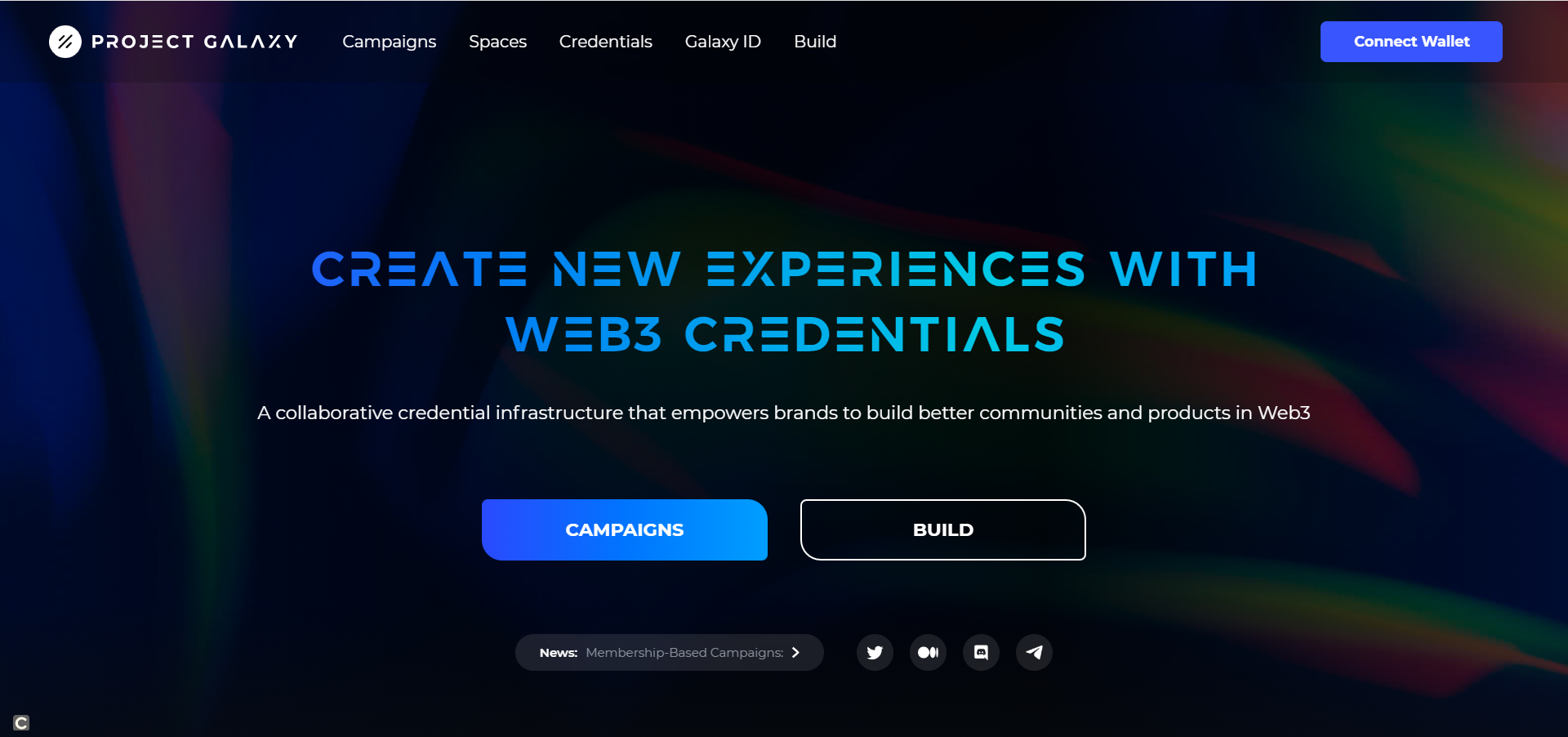
2. Rabbit Hole
Rabbit Hole is currently a relatively mature self-contained on-chain behavior recording protocol. It uses its own skill NFT to profile user capabilities, and then limits target users based on user skills in the task section, and formulates corresponding tasks to help release tasks The project side realized user positioning and screening. Rabbit Hole uses non-transferable NFT under the ERC721 standard deployed on the ETH main network as credentials (Credentials) to record user data. However, Rabbit Hole also adds some new functions based on it, such as allowing users to transfer the Soulbonding NFT to the destruction address (0x00...), an address can only have one corresponding NFT certificate, and the certificate contract can be passed through the standard proxy contract Make upgrades etc. Although the purpose of Rabbit hole is to become a core component of the Web3.0 ecosystem, the system is currently developing its own protocol in a relatively centralized manner, rather than directly establishing the underlying common protocol. Therefore, its system currently provides two types of credential NFT usage: permissionless integration and partnership type. Unlicensed integration class credentials can be used withGuild、Collab.Landand other tools to use together. The partnership category is the corresponding certificate customized by the project party.
Rabbit Hole focuses on the collection and proof of on-chain information, and uses verifiable on-chain data to realize two-dimensional proofs of "skills" and "quests".
First of all, in the skill section, Rabbit Hole divides it into three directions: DeFi, NFT and DAO, and provides three attributes of Topic, Level, and Season for NFT in the three directions to represent the advanced level of skills, but currently only the introduction level and Season 0. To obtain the skill certificate NFT of the corresponding direction, the user needs to complete the on-chain interaction tasks (Tasks) stipulated by the Rabiit hole, such as the user completing "Mint an NFT on the Zore chain", "Join a Party of PartyBid" and "Publish on the Mirror After an Entry" three tasks, you will be able to claim a DeFi-oriented voucher.
Secondly, in the task section, Rabbit Hole will publish on-chain interactive tasks designated by other project parties. At the same time, users are required to have certain "skills" or "Bright ID" to participate, and a certain amount of designated tokens will be rewarded after completion. Coin or NFT.
Track positioning analysis:
Rabbit Hole is currently used as the task distribution protocol of the project. The cooperative project party pays for its tasks, thereby incentivizing users to complete specific operations on the chain. Users complete the corresponding interactive behavior through the agreement, and obtain the points of the agreement or the incentives given by the project party. This positive-sum interaction helps users learn new skills or methods of using the encryption industry and earn rewards for them, and also acquires a large number of new users for the DAPP protocol.
secondary title
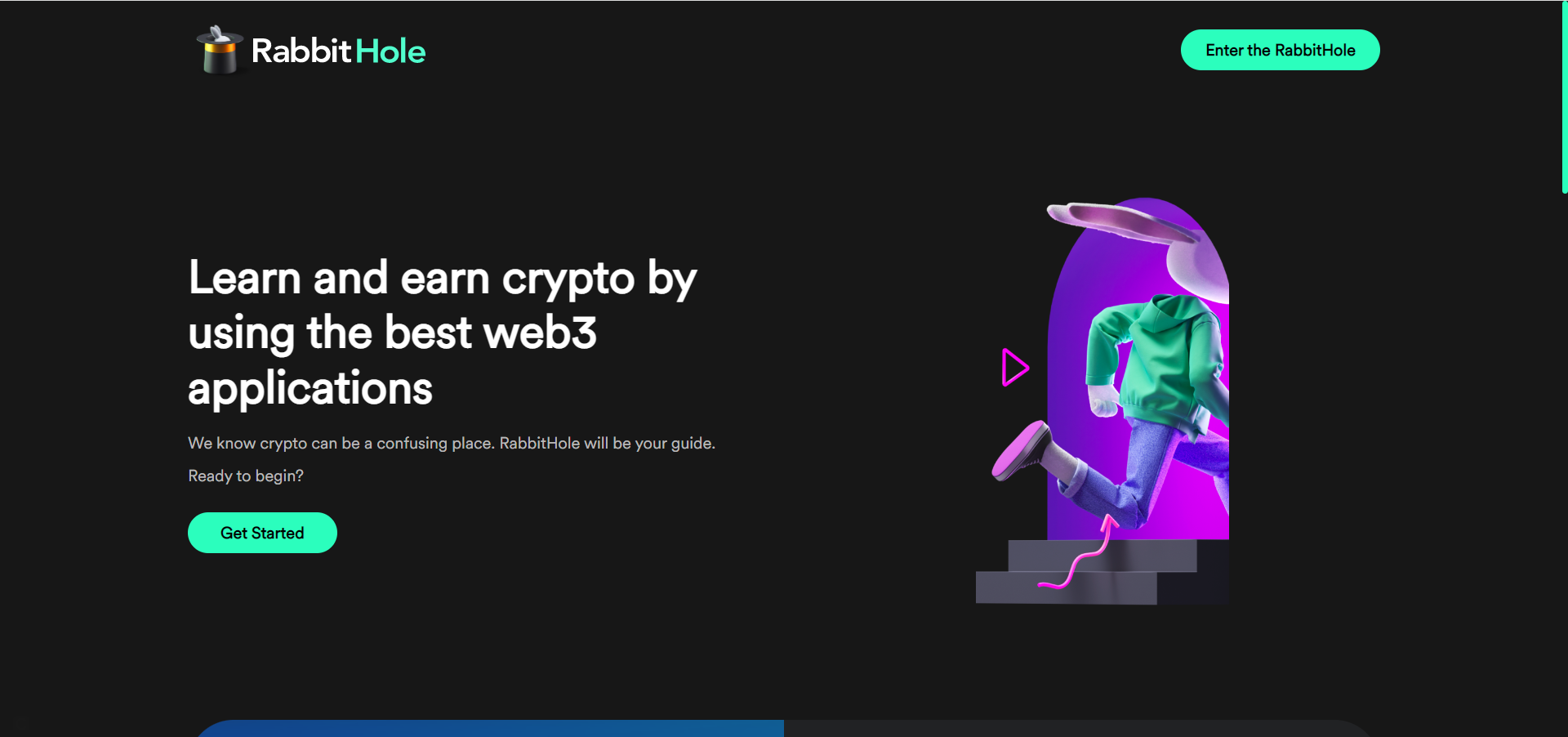
3. DegenScore
DegenScore's vision is to build a Metaverse based on on-chain information. In a research report by a16z, DegenScore is defined as a system that can summarize and simplify the information on the address chain, make this information more readable, easy to compare, and be used to measure the degree of user obsession with cryptocurrency.
DegenScore has established a complete ecosystem for on-chain addresses, including:
(1) Perfect on-chain behavior scoring: including highlight moment display, tagged address, leaderboard system, etc.
(2) Cooperation with other project parties: The CAFE section displays cooperation activities with other project parties, such as airdrops, various interactions, etc.
(3) DegenScore provides an easy access interface for other projects. Any DAPP can integrate the scoring service provided by DegenScore into its ecosystem, which becomes one of the basis for its screening and judging users.
DegenScore's scoring dimension for behavior is multi-dimensional and relatively complete. In the V1 version, DegenScore forms a Degen score through a series of on-chain behaviors, including but not limited to, holding specific tokens; interacting with specific smart contract protocols, and adding the dimension of time, such as early DeFi farmers wait. In the latest updated V2 version this year, DegenScore has further refined the scoring system into three major sectors: DeFi, NFT and Others. Among them, the DeFi section includes whether you are an early protocol participant, the number of transactions of DeFi tokens, the number, the number of pools participating in the farm, time nodes, duration, etc.; and in the NFT section, whether you have participated in a series of blue-chip NFTs such as BAYC AZUKI MINT, or whether you hold blue-chip NFT, etc., are important scoring reference dimensions.
Track positioning analysis:
secondary title
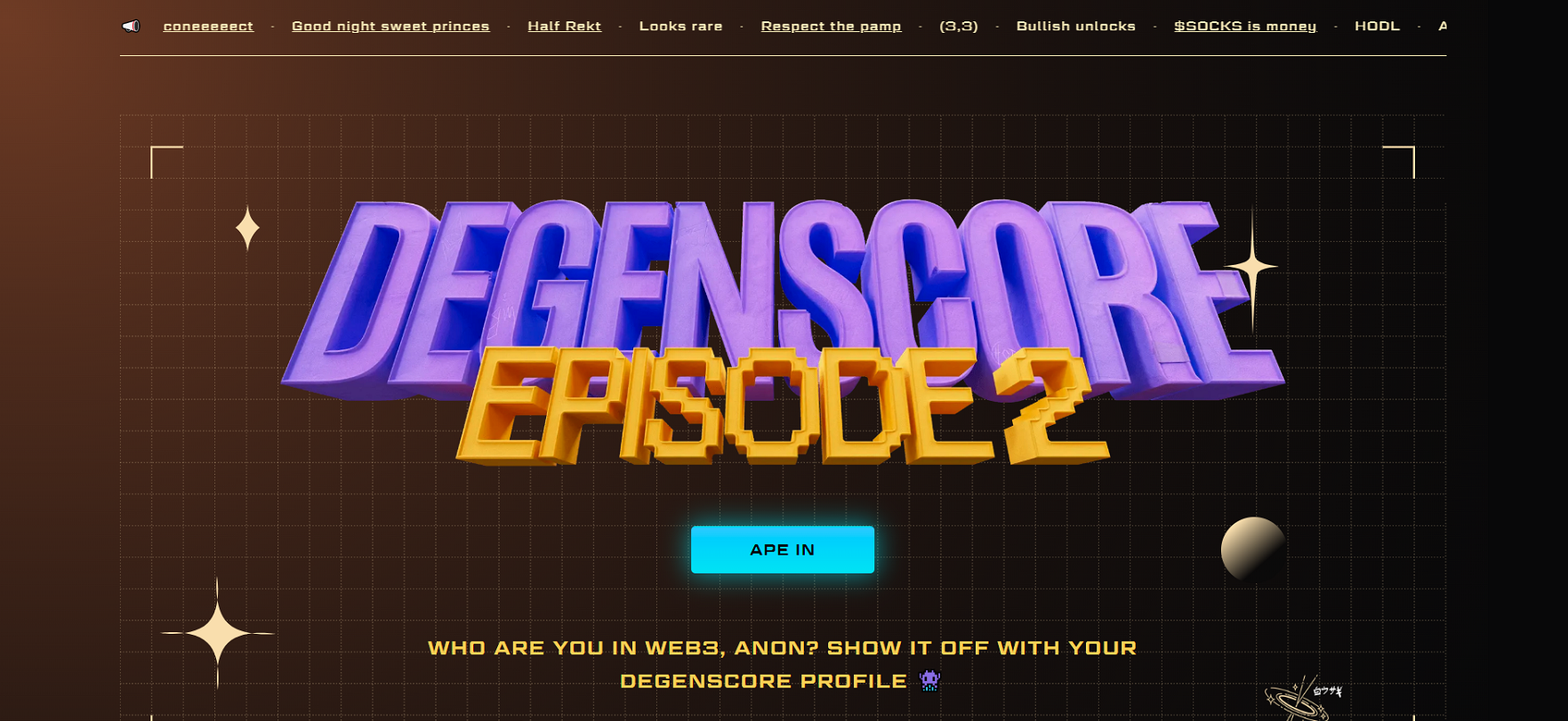
4. Noox
Noox is a decentralized on-chain achievement proof platform that allows users to issue, prove and mint on-chain achievements in a permissionless manner. Therefore, it is essentially a programmable on-chain data verification infrastructure. Noox casts the user's Web3.0 achievements as Soulbound NFT (Noox Badge), which is a non-transferable ERC1155 standard programmable on-chain achievement NFT (Non-transferable ERC-1155 Token). Noox badges contain a string of metadata for on-chain operations, eligibility criteria, and validation logic for each badge. Anyone can program arbitrary rules into the badge standard to use data such as EventLogs and Transactions to obtain transaction information on the user chain (for example, transaction currency, transaction quantity, transaction value, interaction type, etc.).
Track positioning analysis:
secondary title
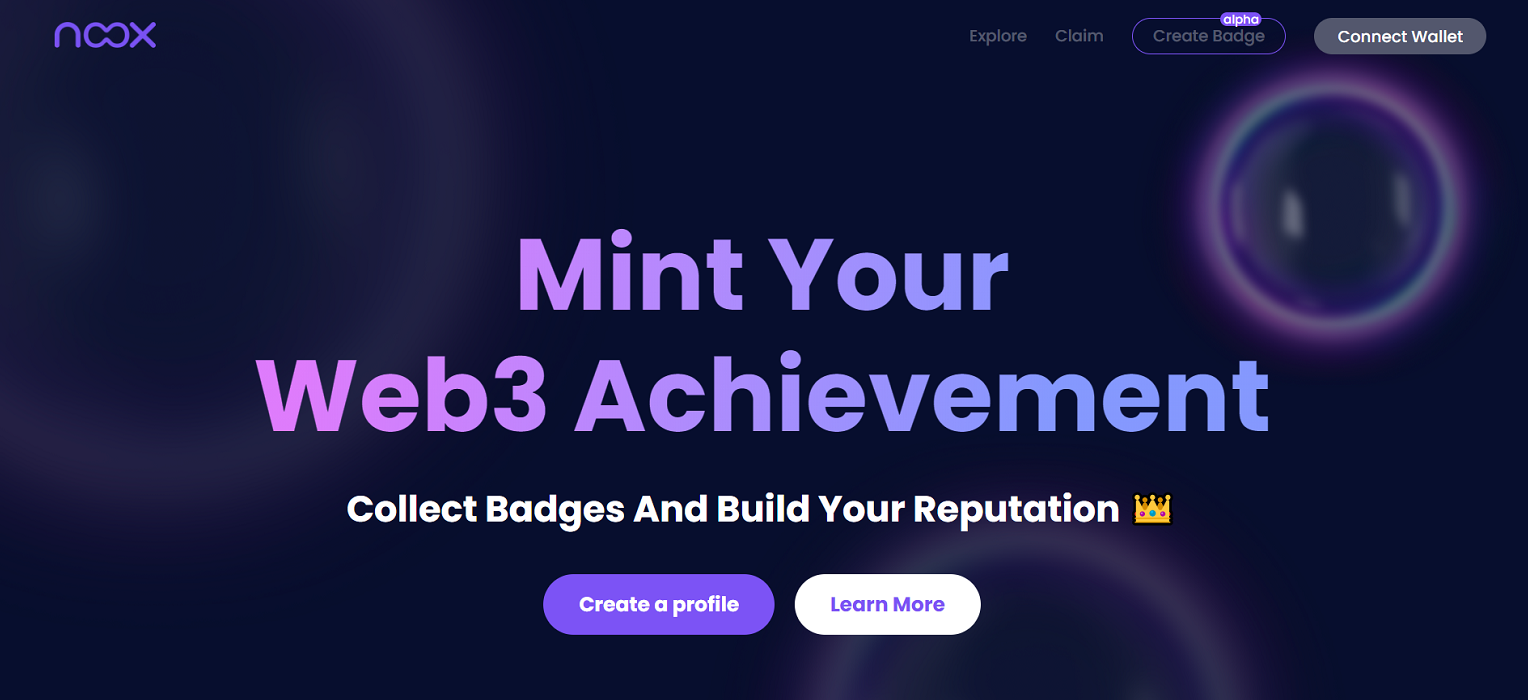
5. ARCx
ARCx is a decentralized liquidity marketplace on ETH and Polygon that provides the safest and most capital-efficient lending experience in DeFi by using DeFi credit scores. The main goal of ARCx is to improve the capital efficiency of the DeFi lending market by measuring and rewarding high-value lending behavior. ARCx uses DeFi credit scoring to continuously analyze on-chain behavior and assess the credit risk of individual wallet addresses in DeFi. The DeFi Credit Score is a numeric value (between 0 and 999) that describes the credit risk of an individual address based on its on-chain lending and lending activity. Score calculations are based on each borrower's historical data and operational experience over time in managing risk and avoiding liquidation. Scores are calculated off-chain and then published on-chain via ARCx's custom oracle infrastructure. The DeFi credit score will be updated on-chain with a delay of 48 hours. Scores are made up of three main components - Daily Score Rewards, Survival Score Rewards, and Liquidation Penalties. These three components combine to arrive at the final DeFi credit score.
Track positioning analysis:
secondary title
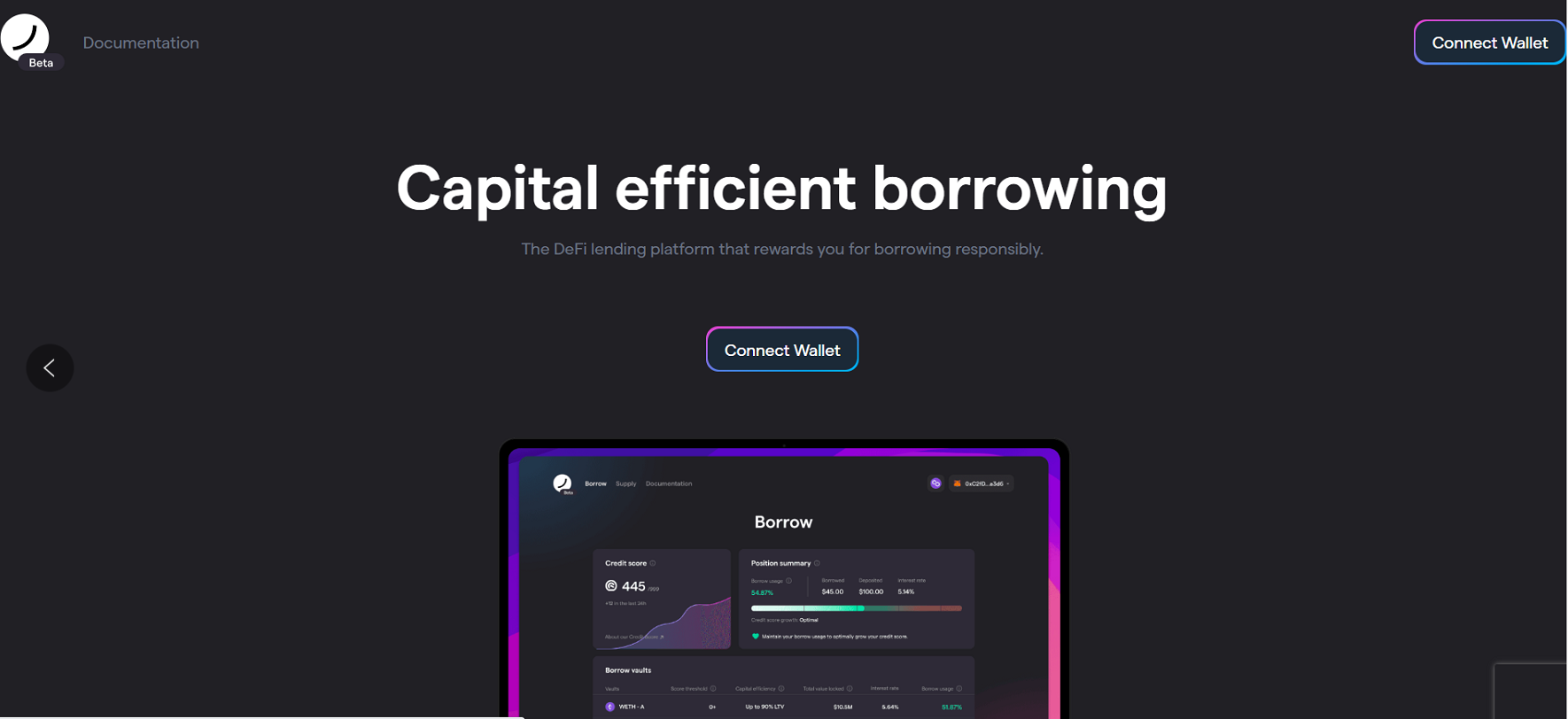
6. lvl protocol
The lvl protocol is a product of indie DAO, designed to meet the different types and needs of each DAO and even Web3.0 organizations, and link different types of Web3.0 communities. The lvl protocol uses an interoperable "Soulbound" NFT to record data. The lvl token is a dynamic NFT, showing the skills acquired by users in each community, combining data from multiple sources (data from major social networking sites, stored in IPFS), verified by the community, and then stored on the chain, so Any smart contract can interact on the user's lvl protocol. It connects data from every DAO and ecosystem in the way of SBT, while maintaining interoperability on the chain, anyone can mint lvl NFT.
Track positioning analysis:
lvl is an encrypted resume and an on-chain reputation and skills Web3.0 resume, highlighting all the data, experience and contributions of users in communities, DAOs and Web3.0 nodes. For users: lvlNFTs can be minted to track contributions, skills and reputation on-chain. And with dynamic changes. For community administrators, you can combine the lvl protocol with community data, customize the community-related data or resumes obtained by members, and aggregate all off-chain data from your community, DAO, games or Metaverse To the lvl token on the member's chain.
secondary title
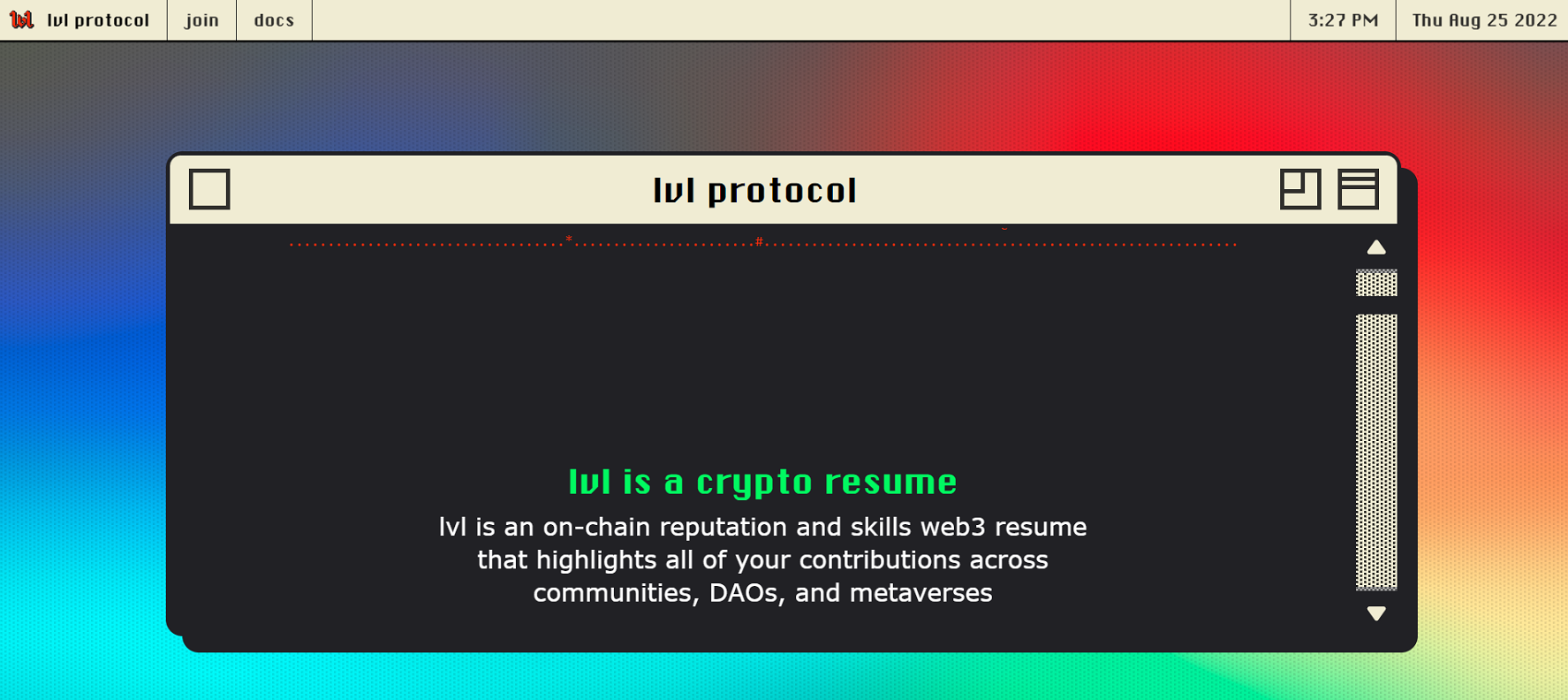
7. Sismo
Sismo is a modular proof protocol with a focus on decentralization, privacy, and availability. The protocol is deployed on Polygon. Sismo issues SBT with Non-Transferable Token (ERC1155), which is called badge in Sismo's ecology. Using Sismo, users can generate extensive on-chain information and proofs such as "Donate to Gitcoin grants", "Vote 2 times in ENS DAO", or "Send 100+ transactions on Ethereum". Since Sismo is a modular data protocol, the data on the chain can be freely chosen by the creator. Through identity proof, users can access advanced functions in Sismo ecological services, or prove their reputation in applications and protocols that use the above proof. The Sismo protocol is built on several modular concepts: accounts, proof creators, registries, and badges. The Sismo protocol is open source and modular, which allows multiple types of proofs to coexist, which makes the protocol allow creators to build together, modify and update the protocol to suit different needs.
Track positioning analysis:
First of all, Sismo is a low-level modular proof protocol, which means that the Sismo protocol can be easily used and compatible with other protocols. The project party can freely choose modules according to their own needs to meet the needs of the project and users. In addition, a focus of Sismo is ZK badges (zero-knowledge proof badges), and Sismo currently does not disclose how they are created or used. The generation process of the ZK Badge relies on a zero-knowledge proof mechanism and ensures the privacy of users and data. ZK Badges are privacy-preserving badges that do not create any link between the source account used to certify and the target account receiving the badge. This means that the project party can complete the user behavior screening to issue the qualification certificate SBT or some kind of reward while fully guaranteeing the privacy of the user address.
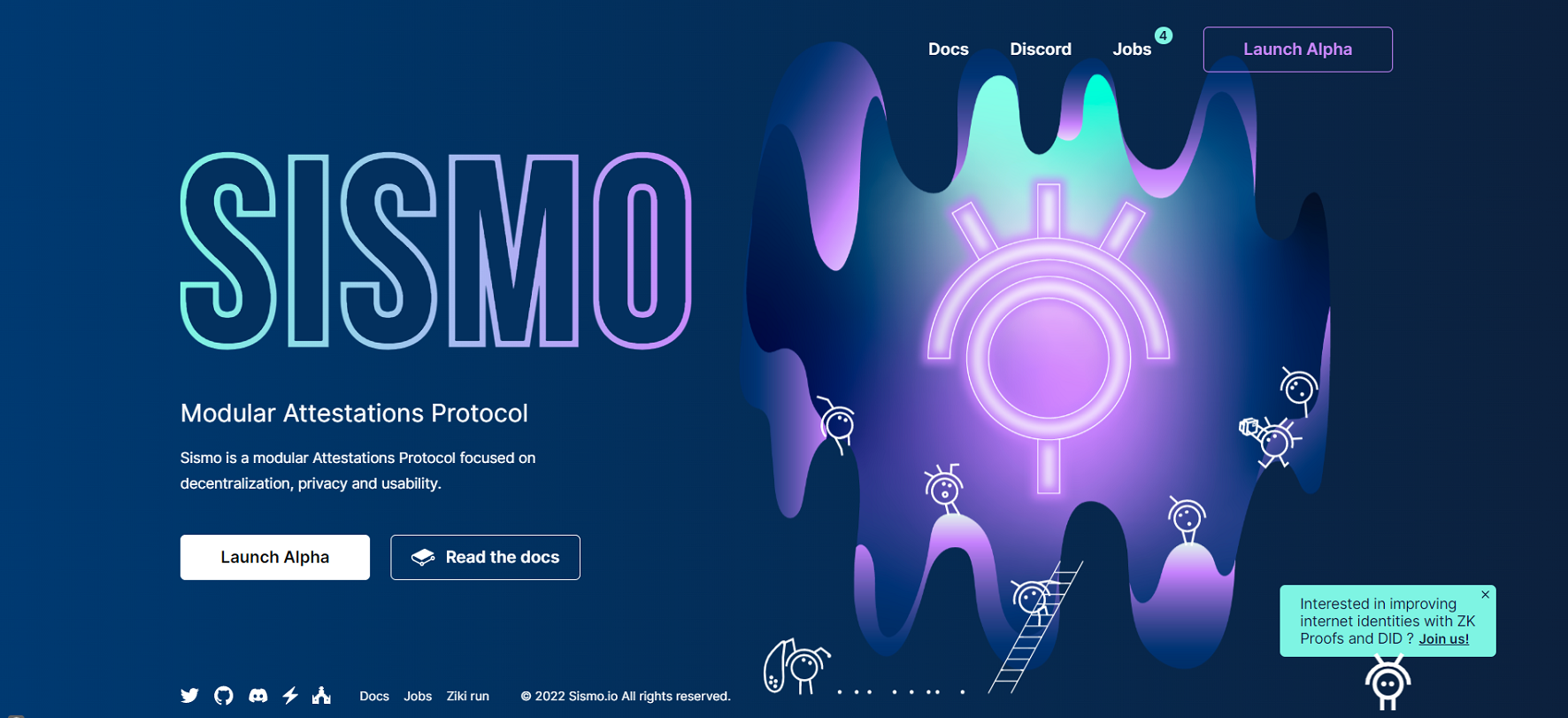
first level title
On-chain portrait imagination space and application scenarios:
First of all, users have the right to choose which credentials to use to represent themselves or even reject unwanted credentials, instead of passively letting the agreement be labeled, which is the premise of everything. Secondly, we believe that the final form of on-chain portraits should be an open-source, protocol-level, modular user behavior record ecosystem based on data acquisition methods such as The graph subgraph and API, in case certain protocols are centralized Exclusive access to free user data. In this system, the protocols, as the issuers of the certificates representing the user's reputation, their own qualifications also need to be reviewed and selected by the users, otherwise it will form a situation where the credit on the chain is monopolized by the centralized organization, which will lead to the agreement being useless. Do evil at cost and control user credentials at will. Therefore, based on the choice of both parties, users and other project parties can search for the interaction records corresponding to the behavior in a modular manner according to the target behavior, and for this purpose, mint credentials to represent the existence of the behavior and build a reputation for themselves/ portrait. At the same time, these certificates should be interoperable across the entire chain or even across chains, especially interoperability between public chains that support EVM (the same address can be used through a private key, that is, the same identity carrier), so that the behavior on the chain can form a complete user Portraits maximize their value. For example, in the middle stage of development, a certain leading project joins other leading projects to establish a set of common ERC standards based on its existing certificates or form a certificate certification organization composed of DAOs to standardize the identity system on the chain and build a large-scale The user portrait system recognized by most projects and users will eventually become the widely used ERC20 standard, an on-chain social credit system token standard.
secondary title
1.DeSoc
secondary title
2. On-chain resume protocol
secondary title
3. Launchpad and AMA and other announcement agreements
secondary title
4. On-chain credit financial system
secondary title
5. Complete social credit system
Conclusion:
Conclusion:
In the era of digital economy, people always say that user data in the Internet is a gold mine, and Internet companies realize the value-added of data by processing data. In the Web 2.0 era, for enterprises, user data is fragmented and it is difficult to see the whole picture. For users, the ownership of data belongs to the platform. The value of data processing has nothing to do with individuals, but in the Web3.0 era, due to the characteristics of the blockchain, the user's footprint on the chain belongs to himself, which fundamentally changes the ownership structure of the data. In order to improve the user address reputation, users are also willing to build their own portraits on the chain. For the agreement parties, compared with the Web2.0 information island era, a more comprehensive user portrait can be used to achieve user growth and capture more value. Therefore, the direction of on-chain portraits has the development potential that we expect.
Source:
https://wrenchinthegears.com/wp-content/uploads/2022/05/Vitalek-Buterin-Soulbound-Token-Paper-May-2022.pdf
https://deepdao.io/people
https://galaxy.eco/
https://mirror.xyz/0xBdA3229d75099397f902B43a1DbD18b6175c11A7/MqbpBjaQoh5LqrD-qsnB95JKH-dRdPotJTzqbkc33nc
https://docs.galaxy.eco/
https://noox.world/
https://docs.noox.world/
https://rabbithole.gg/
https://docs.rabbithole.gg/rabbithole-docs/welcome-to-rabbithole/our-mission
https://mirror.xyz/cryptolich.eth/o9-KJ4dzsWszGTqKMWcsF5Zb3BE0lCDdyrPx-zEoVHo
https://rabbithole.mirror.xyz/CYsaX0fT-IOV5OO3JiDcXpLFdcnhocVOO5pTZ52hsLE
degenscore.com
arcx.money
https://wiki.arcx.money/welcome/arcx-credit-introduction
https://www.lvlprotocol.xyz/
https://indiedao.gitbook.io/indiedao/products/lvl-protocol
https://docs.sismo.io/sismo-docs/sismo-protocol



